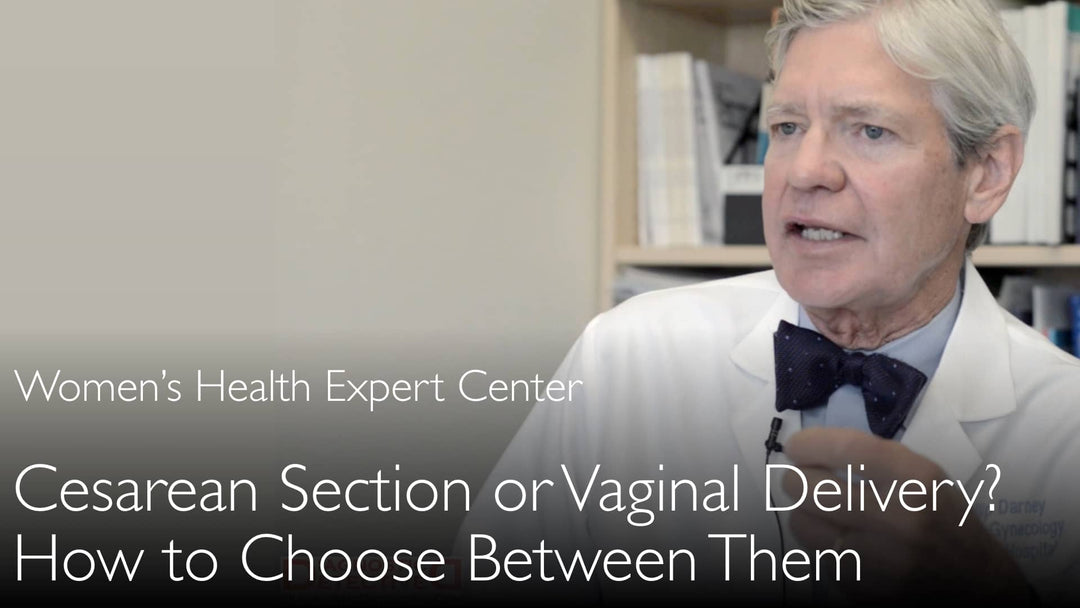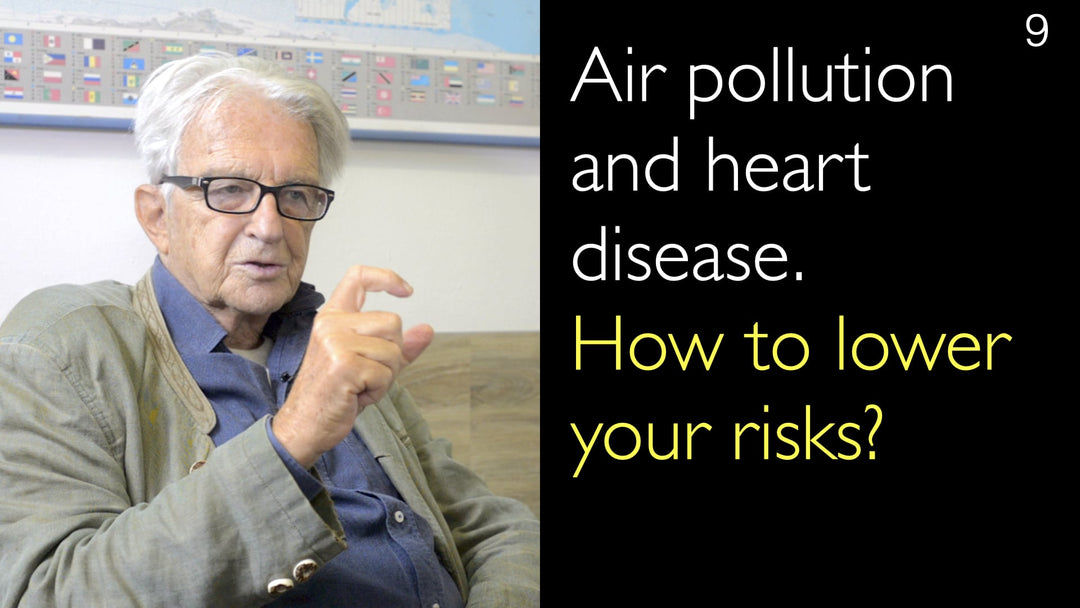Dr. Philip Darney, MD, a leading expert in obstetrics and gynecology, discusses the decision-making process between cesarean section and natural birth. He emphasizes that vaginal delivery is generally safer for both mother and baby, especially when there are no medical indications for a C-section. Dr. Darney highlights the risks associated with unnecessary cesarean deliveries, including complications in future pregnancies. He advises that cesarean sections should only be performed when medically necessary, as rising rates of C-sections globally pose concerns for maternal and neonatal health. Dr. Anton Titov, MD, adds that convenience for hospitals and doctors should not drive the decision for cesarean deliveries, as natural birth remains the safest option.
Choosing Between Cesarean Section and Natural Birth: Safety and Considerations
Jump To Section
- Safety Considerations for Cesarean and Natural Birth
- Medical Indications for Cesarean Section
- Risks of Unnecessary Cesarean Section
- Impact on Future Pregnancies
- Global Trends and Concerns in Cesarean Rates
- Hospital Practices and Birth Outcomes
- Full Transcript
Safety Considerations for Cesarean and Natural Birth
Dr. Philip Darney, MD, emphasizes that vaginal delivery is generally the safest method for both mother and baby. He notes that natural birth minimizes complications and supports better outcomes in future pregnancies. Dr. Anton Titov, MD, concurs, highlighting that natural birth should be prioritized unless specific medical conditions necessitate a cesarean section.
Medical Indications for Cesarean Section
Dr. Darney explains that cesarean sections should only be performed when there are clear medical indications, such as breech presentation or placenta previa. He stresses the importance of a medical second opinion to confirm the necessity of a C-section, ensuring the best treatment plan for both mother and child.
Risks of Unnecessary Cesarean Section
Unnecessary cesarean sections can lead to complications for both mother and baby, Dr. Darney warns. He points out that cesarean deliveries without medical need can result in increased risks during subsequent pregnancies and potential complications that are difficult to predict.
Impact on Future Pregnancies
Dr. Darney highlights that a first cesarean section often necessitates C-sections in future pregnancies, which can increase risks for both mother and child. He advises that vaginal delivery, when possible, is preferable to avoid these complications and support healthier future pregnancies.
Global Trends and Concerns in Cesarean Rates
Dr. Darney expresses concern over the rising rates of cesarean sections worldwide. He notes that this trend poses significant risks to maternal and neonatal health, emphasizing the need for careful consideration and medical justification for each C-section performed.
Hospital Practices and Birth Outcomes
Dr. Anton Titov, MD, discusses how hospital practices can influence birth outcomes. He mentions that some hospitals may prioritize convenience over patient safety, leading to higher rates of cesarean deliveries. Dr. Darney cites San Francisco General Hospital as an example of a facility with low cesarean rates and excellent maternal and neonatal outcomes, underscoring the importance of prioritizing natural birth whenever possible.
Full Transcript
Dr. Anton Titov, MD: How to decide to deliver a baby by Cesarean section or natural birth? What is safer? C-section or natural delivery?
Dr. Philip Darney, MD: Induction of labor and cesarean section have to be done only when medical indications exist. Vaginal delivery is the safest method for both baby and mother. Natural birth is also better for future pregnancies. The first cesarean section often requires C-sections in subsequent pregnancies.
Medical second opinion confirms that breech presentation and placenta previa diagnosis is correct and complete. Medical second opinion also confirms that cesarean section is required. Medical second opinion helps to choose the best treatment for placenta previa and breech presentation. Get a medical second opinion on placenta previa and be confident that your treatment is the best.
Dr. Anton Titov, MD: Is it a question of a woman's choice if there are no medical indications for a C-section? How to decide whether vaginal birth or cesarean section is better? How to deliver a baby after an uncomplicated pregnancy?
Dr. Philip Darney, MD: Cesarean section delivery should only be done when it is medically necessary. Induction of labor for a vaginal delivery should be done only when it is medically necessary. Cesarean delivery and induction of labor in vaginal delivery can be done too early, which is dangerous. The baby should be delivered when it's ready to be delivered. Pregnancy becomes full term at forty weeks.
Cesarean delivery without medical indications is harmful to both the mother and the baby. Rising rates of cesarean section delivery all around the world are of concern. Higher rates of cesarean delivery increase the risk to both mother and baby in subsequent pregnancies.
Cesarean delivery itself can result in complications for both mother and child. It is difficult to anticipate some complications of C-section. So vaginal delivery whenever possible is the best course of action.
Dr. Anton Titov, MD: This is very important because frequently a scheduled cesarean section delivery is convenient for the hospital and for doctors. Maybe this convenience of C-section delivery accounts for the growth in cesarean sections around the world. But natural vaginal birth is the safest. It is the best for both mother and child.
Dr. Philip Darney, MD: Yes. I will give an example. We are now in San Francisco General Hospital. There was an article in the New York Times about San Francisco General Hospital. It is the safest place for mother and baby in California. Why was this hospital the safest for baby delivery? It was mostly because we have a very low rate of cesarean section deliveries.
Dr. Anton Titov, MD: How to decide? What is safer for mother and best for child? The best method to deliver a child is a natural vaginal delivery.







